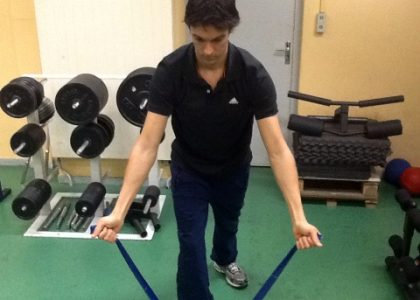In the first two parts of this article (muscle gain during rest – Part 1 and muscle gain during rest – Part 2) we saw that recovery is far from being achieved. something that was done alone, without any action on our part.
We first saw the systems that were in the game, as well as solutions that will help our bodies accelerate this process in order to accelerate progress. Now the practical question is: when should we train the same muscle?
This is a question that is constantly being raised, and we will try to give you a clear and precise answer so as not to confuse you with professional jargon.
We have heard for a long time that we can train the same muscle every 48-72 hours, that is, every 2-3 days. If you’ve read our first two parts, you know this as well as we do now, this is wrong! This hat figure probably comes from old research that believed that only muscles and not another system should repair.
It is impossible to tell how long it will take to remake a muscle, IMPOSSIBLE!
Why? Simply because the recovery time depends on many parameters (outlined in Part 1 and Part 2), which each recover at a different rate.
If we simplify recovery, we can nevertheless establish some relatively precise rules:
- The more I force, the more time I need to recover both during the session (between sets) and after it.
Example. I play with losing streaks instead of stopping right before it, my recovery will take much longer and will require more investment (outdoor activities) on my part to progress. Whereas, if I made the series smoothly, even doing more episodes, I would recover faster (example: Chad Waterbury: Mass Gain Program).
- The more exercise and exercise I do, the more recovery I need.
Example. I do 4 exercises and 4 sets each, recovery will take longer than if I only did one or two exercises with 3 sets each. It is better to focus on the main points than to scatter and do too many exercises and sets (example: a strength training program for intermediate).
- The more muscle exercises you train, the higher the cost of recovery.
Example: I am getting in serious condition, I am tired for several days, all my systems will be checked. On the other hand, if I do the oblique curl it only tires my biceps and very few of my other systems.
- Finally, depending on what level we are, we will recover more or less quickly.
Example: I’m just getting started, I’m still learning movement and can’t really force (stopping with failure of course). The more I advance in my practice, the more I will be able to advance the streak and then affect the speed of my recovery.
If I do the main exercise, I am going to fail and besides, I do a lot of sets, I will put in 3 balls for recovery! This is why we recommend not failing, doing too many exercises, and too many sets in our programs.

So when can I train the same muscle?
Again, if you’ve been reading my articles for a while, you already know the answer. It is clear that for most of us who have full-time jobs, we cannot train all of our muscles twice a week, so we have to make choices according to what we want to do on a priority basis.
Also, sometimes it’s better to do less than too much. By always wanting to do more, we are more likely to fall into overtraining with all the ensuing consequences: injuries, stoppage of training, loss of strength, muscle, motivation …
So, here are my recommendations based on my personal and coaching experience (taking into account the recommendations of my other articles, namely: do not do too many exercises, sets and do not fail):
- If you are a beginner, you can train all your muscles twice a week without worry.
- If you have a strength level for beginners (calculate your level in the article. Are you strong?), but have been training for a while, do not train all muscles twice a day. a week. Training for 3 days with workouts 4 times a week can be the solution (I repeat the session twice a week), even if training each muscle once a week will usually help you progress.
- If you are moderate or proven and do not have a weak point to correct, train each muscle once a week. If you have a weak point, take inspiration from the “Super Biceps”, “Triceps”, “Pectorals” programs, reducing the work of the agonist muscles to the muscles you want to develop as a priority. You cannot do the same muscles twice without neglecting others and recovering well.
These are general rules based on my experience, not rules to be followed absolutely. Following them will allow more than 90% of you to progress in each session.
If you are not making progress with each session and it lasts for several weeks, feel free to reconsider your planning for the week by trying to do less first if you have done more than the programs on the website or by increasing your frequency of training if you did less than on the website (possibly reducing the amount of training).
Now that you know almost everything: go to workout, never give up!






